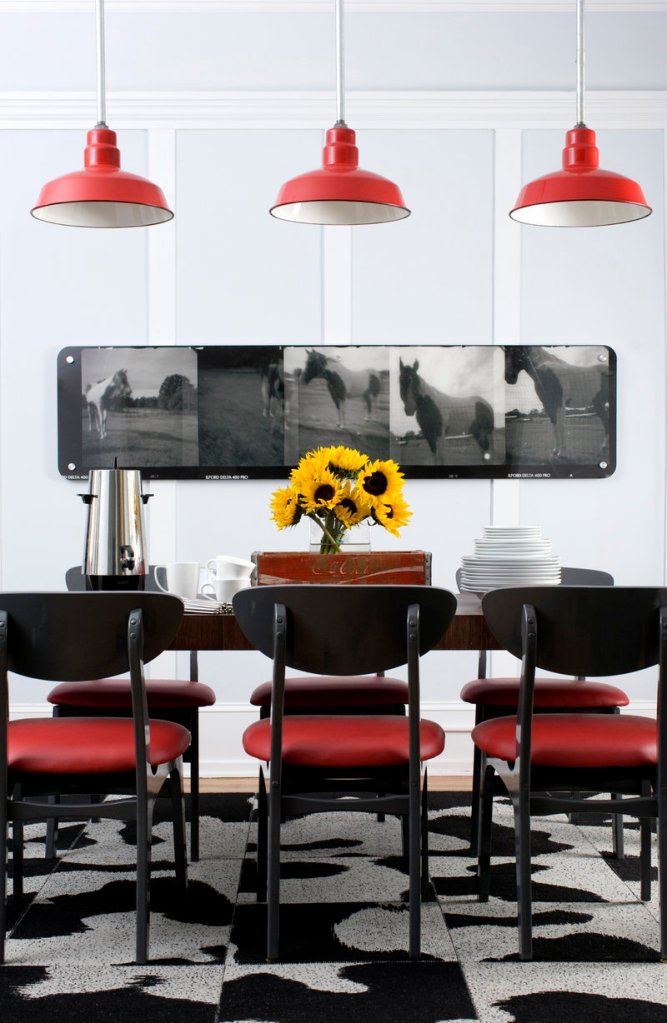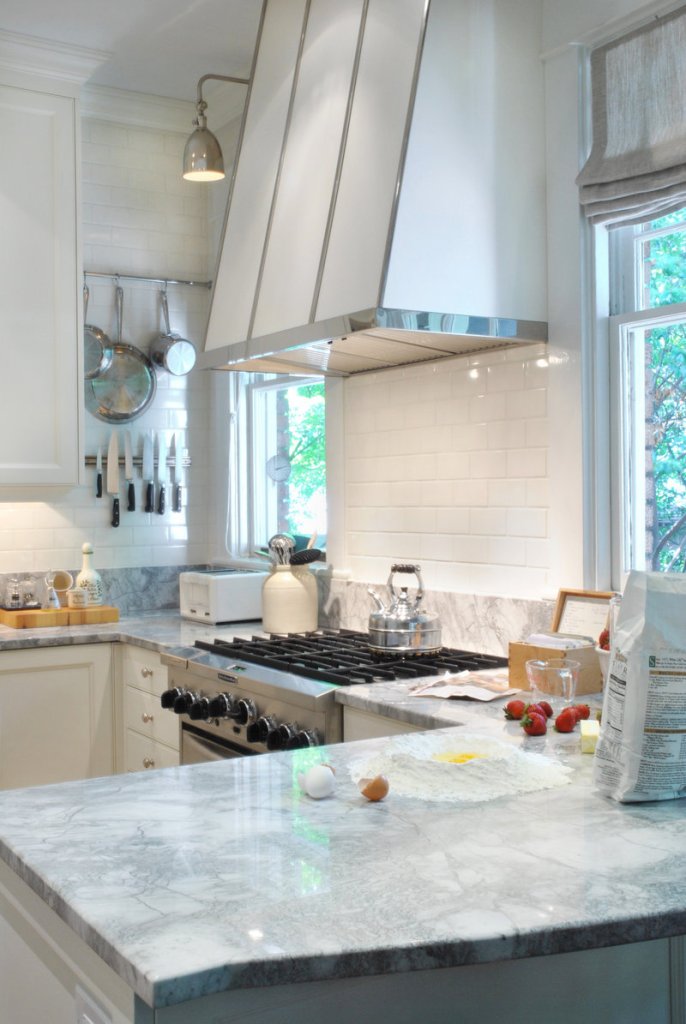When we furnish a room, many of us carefully measure to be sure the couch isn’t too wide or the dining room table too long. We draw a horizontal map, determined to fit everything in without crowding.
But design experts do something more: They think vertically.
Kitchen and bath designer Matthew Quinn, principal of Design Galleria Kitchen and Bath Studio in Atlanta, says that as designers learn to sketch room layouts in design school, they discover the impact of the vertical and horizontal lines that furnishings and architecture create.
For example, a homeowner might not realize that a dark countertop contrasting with lighter cabinets underneath will create a horizontal line across the room, making the ceiling feel lower and the kitchen smaller.
“One of the main reasons that clients hire designers is that grasping scale can be difficult,” says interior designer Kyle Schuneman of Live Well Designs in Los Angeles.
Ready for your own crash-course in thinking vertically?
Quinn, Schuneman and decordemon.com founder Brian Patrick Flynn offer tips on how to work effectively with the heights of furniture, draperies and decorative pieces:
MAXIMIZE SMALL SPACES: To make a small or low room feel bigger, draw some vertical lines, says Schuneman.
“Hang the curtains all the way to the ceiling, not to where windows stop. Your eye visually feels like the space has been lifted,” he says.
Patterned wallpaper or painted stripes on a wall can also help do the trick.
For tile bathrooms and kitchen backsplashes, Quinn suggests hanging rectangular subway-style wall tiles vertically, so they appear as tall, thin pieces. People normally use subway tiles horizontally, presenting them as short, wide rectangles.
BRING INTIMACY TO LARGE SPACES: The same principles work in reverse. You can bring a large room down to a more comfortable scale by adding horizontal lines through contrasting colors or added surfaces.
A kitchen island with several levels will make a high-ceilinged kitchen feel cozier, says Quinn.
To decorate a huge loft space recently, Schuneman used “lower seating profiles for all the couches and side chairs, and that really kind of created a nook within a big space.” It became “a room within a room,” perfect for intimate conversation.
PLAY WITH LIGHT: Lighting also can bring a large room down to size or add the impression of lift to lower ceilings.
“When spaces are tall, grounding them with pendant lights or chandeliers really makes a space seem more intimate,” Flynn says.
Quinn agrees: We notice hanging lights in relation to the heads of people standing in a room. Lights that hang within a few inches of the heads of your tallest guests will make even a very tall room feel warm and welcoming.
For low-ceilinged rooms, try recessed ceiling lighting instead of hanging lights. Quinn suggests choosing smaller, pin-point recessed lights rather than the wider, can lights. The larger ones can make you feel as though a spotlight is bearing down on you.
Another trick: If your ceiling lighting can be positioned, point lights toward the sides of the room rather than directly downward. This widens and opens up the space.
ADD DRAMA: You can have fun with height in bedrooms, Flynn says, even if the ceiling is low. “I do this by playing with scale and proportion in relation to tall, architectural headboards or platform beds,” he says. “Similar to a giant chandelier in a grand entry, I love walking into a bedroom and being greeted by a statement bed. To keep a tall headboard from being too tall, I counterbalance it with hefty bedside chests, and either hanging pendant lamps above them, or by bringing in super-tall table lamps.”
Or use art to play with dimensions: “A super wide, extra tall piece of art over a simple sofa in a living room can strike the perfect balance between the furnishings and the architecture,” Flynn says.
CREATE STORAGE: Furniture that extends to the ceiling can “visually open up the space, but also give you all that storage you’d lose otherwise,” Schuneman says.
So build custom cabinets all the way to the ceiling or choose pieces of furniture that reach as close to your ceiling as possible.
“People often use a cabinet that they already have, which doesn’t reach the ceiling, and then try to add storage baskets on top,” he says, “instead of buying the right piece — that taller piece — from the beginning.”
DISTRACT FROM A BAD VIEW: “The best places to use tall, vertical furnishings are in rooms where stellar views aren’t the main attraction,” says Flynn. “I wouldn’t be quick to do high-back, Hollywood Regency chairs along a floor-to-ceiling glass wall in a Manhattan high-rise overlooking Central Park.”
If you’ve made the right decisions about height, Schuneman says, then you can fill a space with furnishings without feeling overcrowded. “It sounds counterintuitive,” he says. “But the more furniture you put into a space, it does actually open up the space. It shows how usable it is.”
Send questions/comments to the editors.




Success. Please wait for the page to reload. If the page does not reload within 5 seconds, please refresh the page.
Enter your email and password to access comments.
Hi, to comment on stories you must . This profile is in addition to your subscription and website login.
Already have a commenting profile? .
Invalid username/password.
Please check your email to confirm and complete your registration.
Only subscribers are eligible to post comments. Please subscribe or login first for digital access. Here’s why.
Use the form below to reset your password. When you've submitted your account email, we will send an email with a reset code.